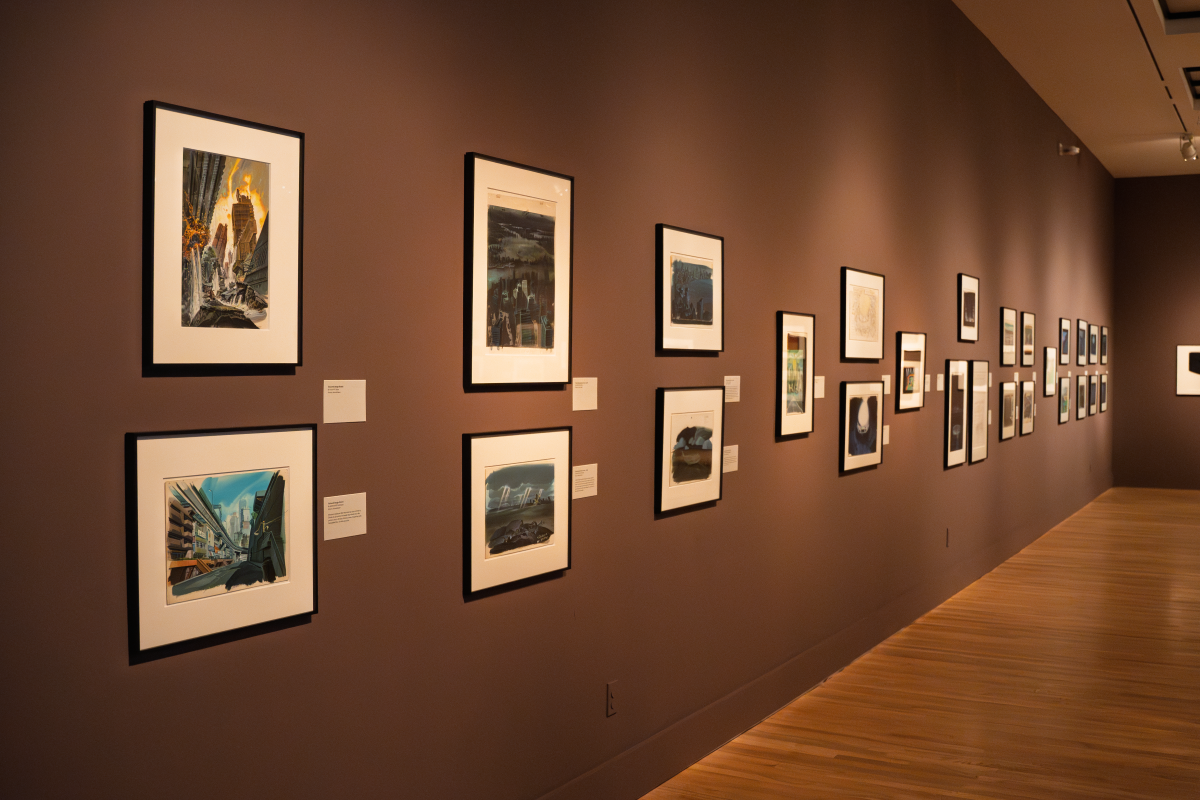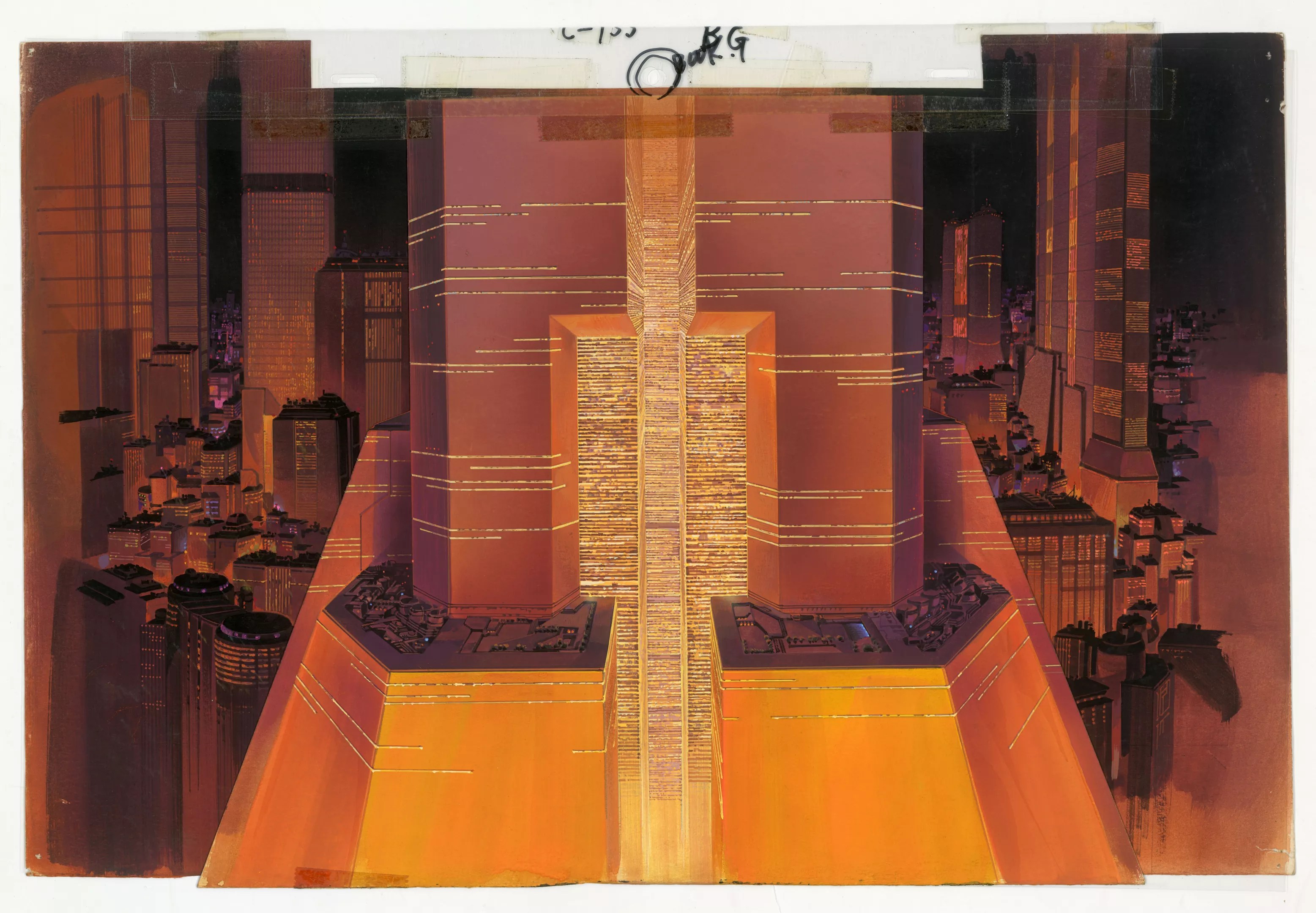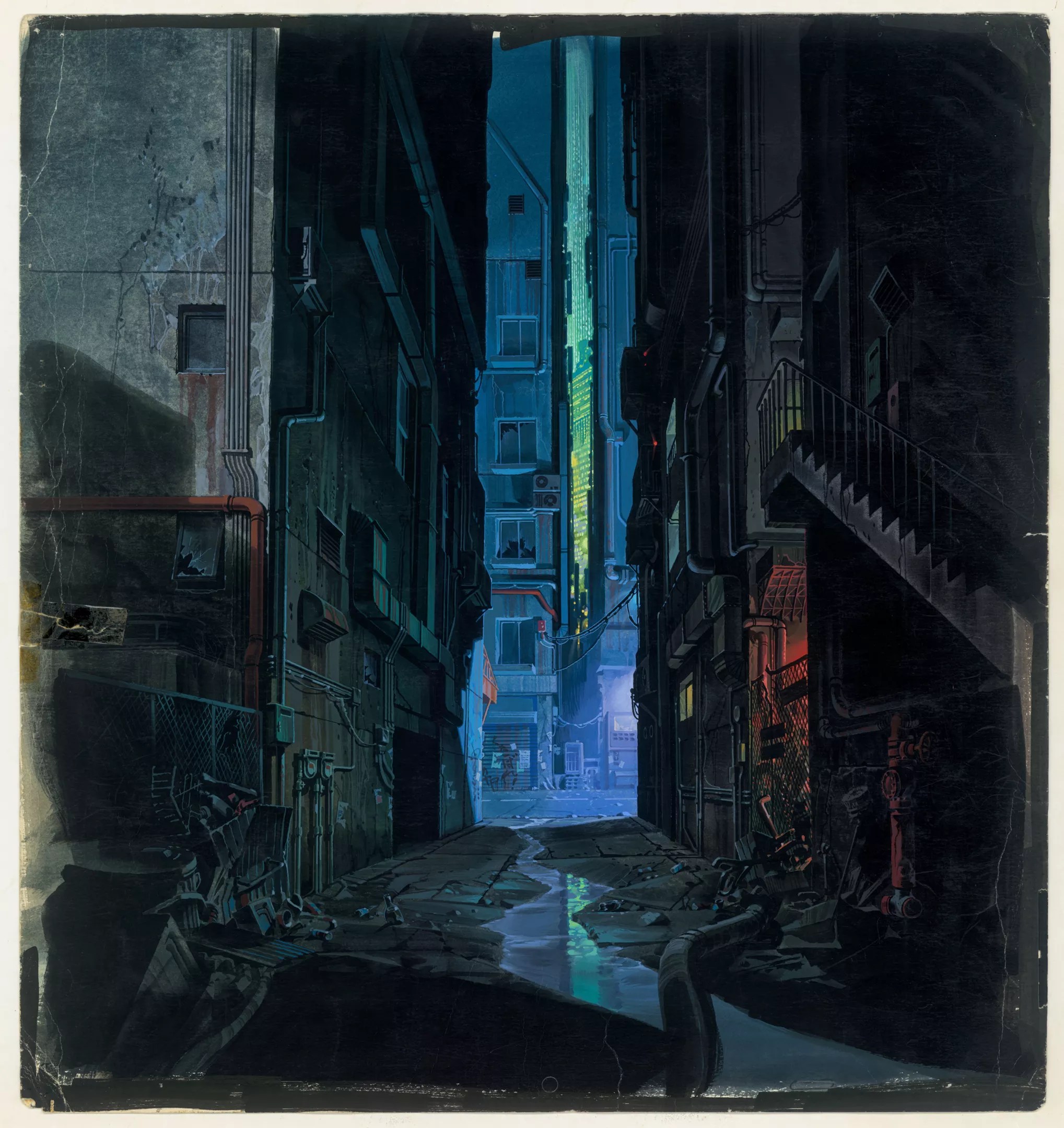
Morikami Museum and Gardens photo

Audio By Carbonatix
Towering skyscrapers, neon-lit alleyways, and industrial zones – Neo-Tokyo, the future city of Akira, is closer than you might expect.
Happening now at the Morikami Museum and Japanese Gardens in Delray Beach, “Akira: Architecture of Neo-Tokyo” is a once-in-a-lifetime chance to experience the world of the classic cyberpunk anime film and explore the painstaking process of its creation. Forty-five background illustrations from the film have been assembled for the exhibition, which also features interactive displays and clips from the film projected on a wall of shoji screens. The museum is also holding film screenings in its theater, with the next showing on Sunday, December 15.
Today, few question whether these images are works of art. Yet, according to the show’s curators, some of the artists had to be convinced that the work was worthy to hang in a museum. They saw it as commercial art, proficient but not necessarily expressive enough to qualify as fine art. Hiroko Kimura-Myokam, the show’s co-curator, along with Stefan Riekeles, connects it to a wider tradition of Japanese crafts.

Installation view of “Akira: Architecture of Neo-Tokyo” at the Morikami Museum
Morikami Museum and Gardens photo
“This background art is more like popular art; it’s based on craftsmanship,” she says. “They use the same paint and brushes and papers as other artists. It’s not like they’re using special tools. They use the same methods but paint so fast because they have to keep to their production deadline. They have this outstanding technique, like craftsmen. That’s why I love this work.”
Akira‘s Long-Lasting Influence
Adapted by director Katsuhiro Otomo from his own bestselling manga, Akira has become one of the most influential animated films of all time. Following a gang of delinquent teenage bikers in the future city of Neo-Tokyo as they come into contact with a secret government conspiracy, the 1988 film was a benchmark that introduced mature themes into the medium by way of its dystopian story and world.
Millions have been swept along by the story of dueling friends Tetsuo, who goes mad after developing psychic powers and mutates into something beyond human, and Kaneda, who joins a rebel group in order to stop his buddy and reveal the secret of Akira, the mysterious boy that destroyed the original Tokyo. The film appealed to a new demographic of anime consumers – teens and young adults, or seinen in Japanese.
“Animation used to be for children,” Kimura-Myokam says. “In Japan, in the late ’70s, directors tried to create animation not for children or adults but for youths. So they tried to make a new genre of animation for a new target audience.”
Perhaps more importantly, Akira also set a new standard in production quality. No one in Japan had ever made a film so painstakingly detailed, with fresh backgrounds for every scene and fluid animation synced to dialogue – still a rare practice in the industry. That meant more time and resources – extra frames drawn, more backgrounds, and more time to perfect it all.
“Otomo is a cinema maniac; his manga is also cinematic. So he tried to use film technique and expression in his anime,” Kimura-Myokam explains.

A final production cut of Akira
Morikami Museum and Gardens photo
“The hunger for detail was so big that they really invented new ways to illustrate and paint, mainly in terms of time dedication to one piece,” Riekeles adds. “That didn’t happen before because it takes many days to paint such a piece, just for a few seconds of screentime.”
Backed by investors willing to bet big on the hit manga and a team of ambitious young animators willing to put more time and energy into the project, Otomo was able to satisfy the desire for a more mature anime worthy of the big screen. The film is credited with launching a golden age of anime that resulted in Evangelion, Cowboy Bebop, Ghost in the Shell, and other sophisticated animations produced at the tail end of Japan’s 20th-century economic boom.
Akira‘s attention to detail has become a defining aspect of Japanese animation to this day. Even as the American industry has almost entirely adopted Pixar-style 3D computer-generated imagery for large productions, most of Japan’s most popular anime films of recent years have remained two-dimensional. Anime auteurs like Makoto Shinkai (Your Name., Suzume) and Naoko Yamada (A Silent Voice, The Colors Within) have achieved massive hits by combining hyperrealist production design with romantic adventure stories set in modern Japan that appeal to today’s young adults, who are crazier about anime than ever – just as Akira did in the ’80s.
The Illusion of Neo-Tokyo
Still, Akira benefits far more from its speculative setting. Neo-Tokyo proves far more imaginative than the contemporary place seen in current cinema. Riekeles says the film is distinct even from the other great sci-fi masterworks that came afterward, such as Ghost in the Shell, because those films are more interested in creating a realistic urban environment. The bold colors and expressionistic compositions set it apart.

“The cityscape of Neo-Tokyo is really a façade. You cannot draw a map of Neo-Tokyo; it doesn’t exist,” says co-curator Stephan Riekeles.
Morikami Museum and Gardens photo
“The cityscape of Neo-Tokyo is really a façade. You cannot draw a map of Neo-Tokyo; it doesn’t exist,” Riekeles shares. “So this city, and especially these paintings, are designed for the visual effect.”
Riekeles and Kimura-Myokam were able to source many of the images thanks to previous projects, such as Riekeles’ book Anime Architecture: Imagined Worlds and Endless Megacities. Several famous scenes from the film are included in the show, such as a few paintings of Neo-Tokyo’s under-construction Olympic Stadium that unwittingly foreshadowed the real, dysfunctional Tokyo 2020 games, postponed a year due to the COVID-19 pandemic. Images of the ruined city from the film’s conclusion contrast with the opening shot, showing the original Tokyo before its destruction.
Yet there’s one particularly meaningful image, unlike the others. Hidden in the playroom sanctum of the psychic children, a fantasy diorama displays the iconic scene from Disney’s Snow White and the Seven Dwarfs, showing the dwarfs huddled around the sleeping maiden. The 1937 film was the first-ever full-length animated feature in color, and like Akira, it was an expensive, ambitious production. Including the reference was Otomo and his team’s way of signaling their film’s similar desires.
“I would argue that they all knew it at the time,” Riekeles says, “not at the beginning of the production, but at the end. They knew what they were doing. It’s also the reason why we have this exhibition here because they kept the work. If this had been a normal TV animation or any other production not with this significance, all these works would have ended up in a cardboard box and been thrown away sooner or later. But in this case, they kept it because they already had the impression that this is something to memorize.”
In other words, they realized they were making history.
“Akira: Architecture of Neo-Tokyo.” On view through April 6, 2025, at the Morikami Museum and Japanese Gardens, 4000 Morikami Park Rd., Delray Beach; 561-495-0233; morikami.org. Tickets cost $10 to $16.